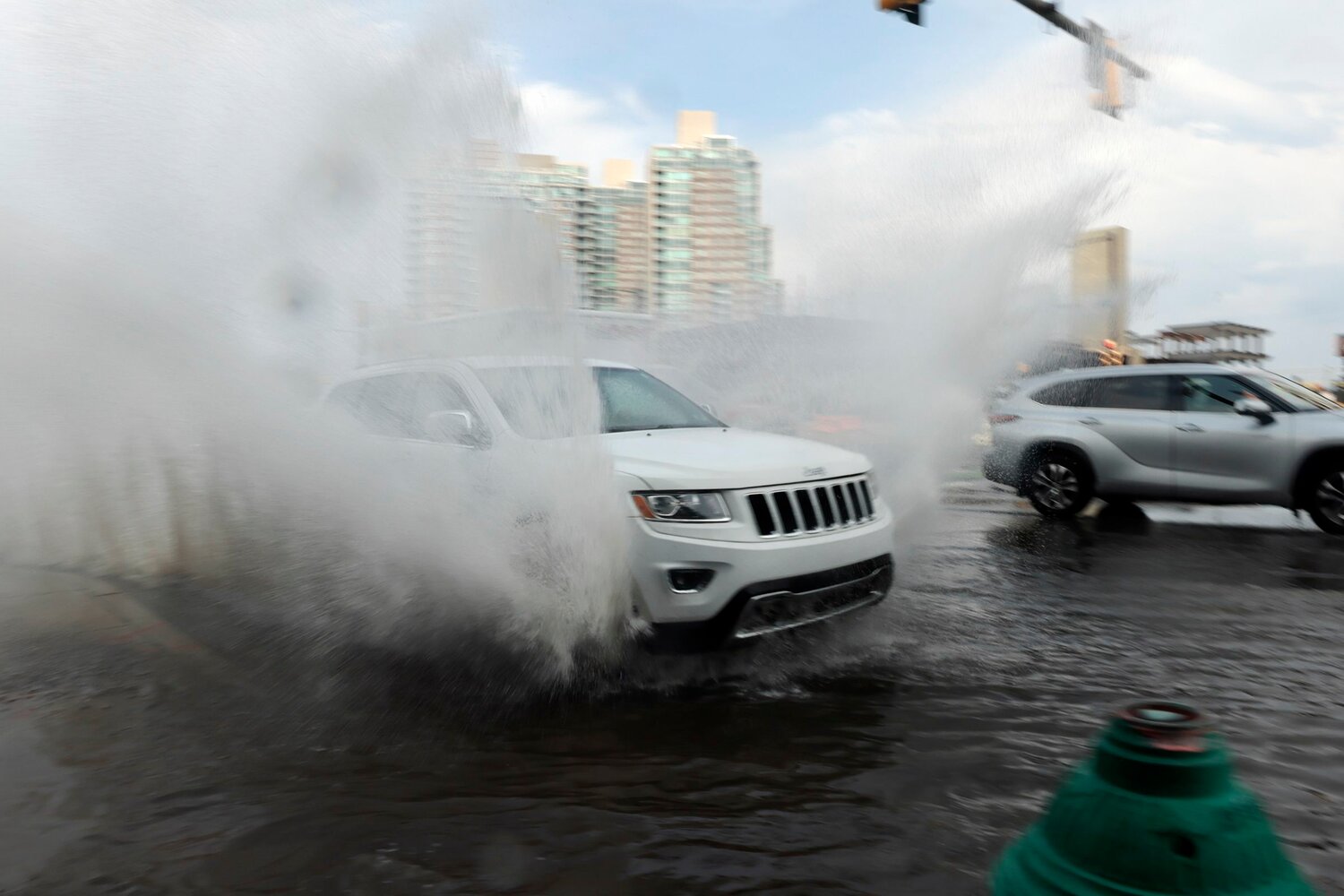AAA: Turn Around When Faced With Flooded Roadways
Tropical System Looks to Douse Delaware with Heavy Rain
WILMINGTON ― Wet weather is on tap for Delaware as Potential Tropical Cyclone Sixteen bears down on the Mid-Atlantic region. The slow moving system is expected to slide up from the Carolinas to Virginia, and then move up into the northeast, including Delaware. The storm is forecasted to douse the region with several rounds of heavy rain as it moves through. That means there’s a threat of ponding on the roads and flash flooding in low lying areas.
“Heavy rains from systems like this can cause huge problems on the roads with wet pavement, decreased visibility and flooding,” says Jana Tidwell, public affairs manager, AAA Mid-Atlantic. “Wet roadways require extra care when braking and turning. Drivers should stay aware of potential flooding and never attempt to drive across a flooded roadway. Weather and road conditions can change in an instant. Know before you go!”
High storm surge along the New Jersey and Delaware coast, is also a concern. Drivers can find the latest alerts on the storm for their areas from the National Weather Service.
In areas where flooded roadways are a concern:
• Turn Around, Don’t Drown! As little as six inches of water can cause drivers to lose control of vehicles and potentially stall engines. Do not attempt to drive through flooded roads. Turn around, find another way, or find a safe location.
• Seek higher ground: If the vehicle stalls or is suddenly caught in rising water, leave it immediately.
• Never drive through standing water: Standing water can be deceiving and motorists should avoid it. No matter how shallow it may appear, water may be concealing downed power lines, be deeper than it appears, or have significant force from flooding.
• Standing water may also be hiding potholes and storm debris: Another good reason not to drive through it!
• Watch out for debris or downed wires on the roadways: If in a vehicle that is in contact with a downed power line, the best rule is to stay there until help arrives. If there is an imminent danger, such a fire, stand on the door frame or edge of the vehicle and jump clear with both feet at the same time. Do not make contact with anything on the vehicle so that your body does not become a pathway for the electricity to reach the earth.
• Take the nearest exit: If conditions worsen to the point where there are any safety concerns, exit the roadway. Don’t just stop on the shoulder or under a bridge unless it is unsafe to proceed otherwise. If your visibility is compromised, other drivers may be struggling too.
AAA has the following wet-weather driving tips:
• Avoid cruise control. This feature works great in dry conditions, but when used in wet conditions, the chance of losing control of the vehicle can increase. To prevent loss of traction, the driver may need to reduce the car’s speed by lifting off the accelerator, which cannot be accomplished when cruise control is engaged. Avoiding cruise control will also allow the driver more options to choose from when responding to a potential loss-of-traction situation, thus maximizing your safety. Cruise control can also cause hydroplaning.
• Watch for hydroplaning: No car is immune from hydroplaning on wet surfaces, including four-wheel drive vehicles. With as little as 1/12 inch of water on the road, tires have to displace a gallon of water per second to keep the rubber meeting the road. Drivers should reduce their speed to correspond to the amount of water on the roadway. At speeds as low as 35 mph, new tires can still lose some contact with the roadway. Even if brakes work under normal conditions that doesn’t mean they will react the same on slippery roads where tires roll with less traction. To reduce chances of hydroplaning, drivers should slow down, avoid hard braking or turning sharply and drive in the tracks of the vehicle ahead of you.
• Be wary of changing wind conditions: Wind gusts often accompany stormy weather. Larger trucks are more affected by high winds, so give them plenty of room on the roadways.
• Pay Attention to emergency alerts: Alerts are provided by the National Weather Service to mobile phones with no sign up required. Adding the National Weather Service to a mobile phone home screen can also make more detailed local information easier to find.
• Make yourself visible: If you are forced to stop in traffic due to poor visibility, turn on emergency flashers immediately.
• Slow down, move over: With wet pavement conditions, it’s important for motorists to allow ample stopping distance between cars by increasing the following distance of the vehicle in front of them and beginning to slow down to stop for intersections, turns and other traffic early. In addition, motorists need to slow down and move over for roadside workers, including emergency roadside service and first responders, law enforcement and construction workers, as well as stalled vehicles. As of July first, Virginia’s Move Over law includes any stationary vehicle displaying hazard lights, emergency signs or flares along with vehicles displaying red, blue and amber colored emergency lights.
Make sure your warm weather emergency kit is fully stocked and in your vehicle before the storm arrives.
AAA Warm Weather Emergency Kit:
• Fully charged cell phone and car charger
• First-aid kit
• Blanket
• Flashlight with extra fresh batteries
• Rags, paper towels or pre-moistened wipes
• Emergency warning devices such as road flares or reflectors
• Jumper cables
• Drinking water/snacks for everyone in the car including pets






